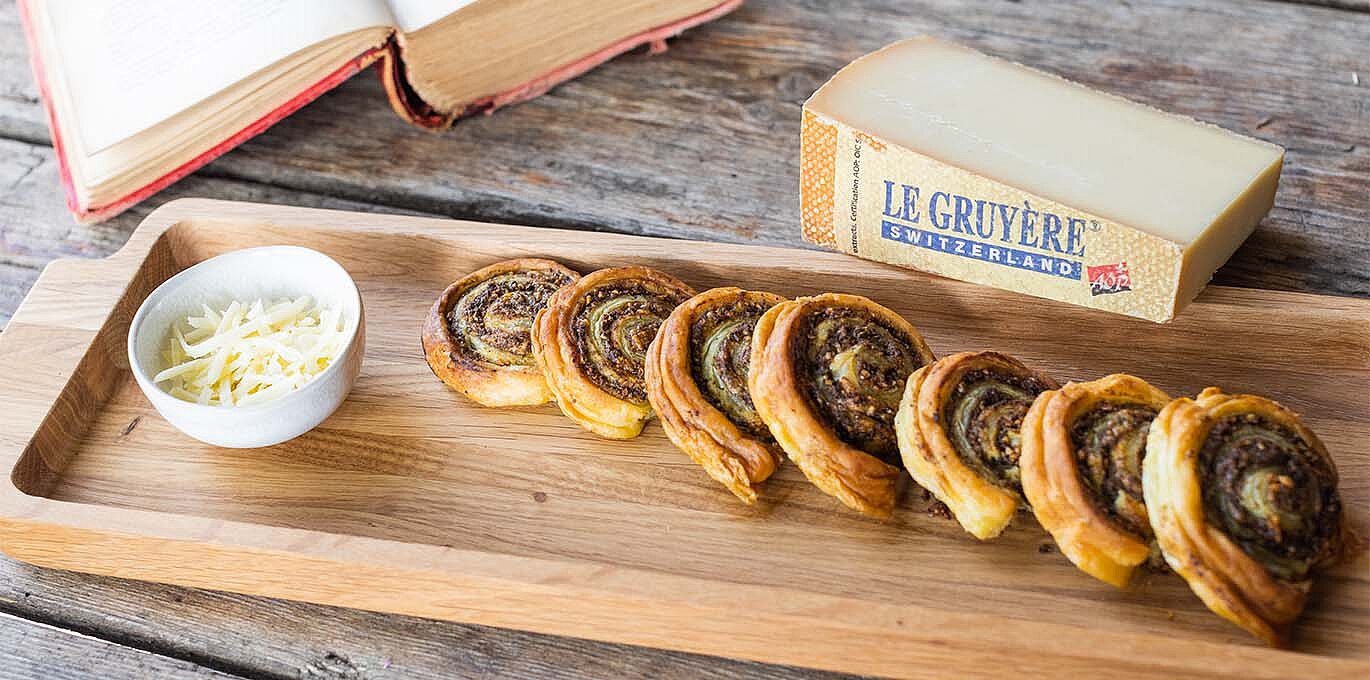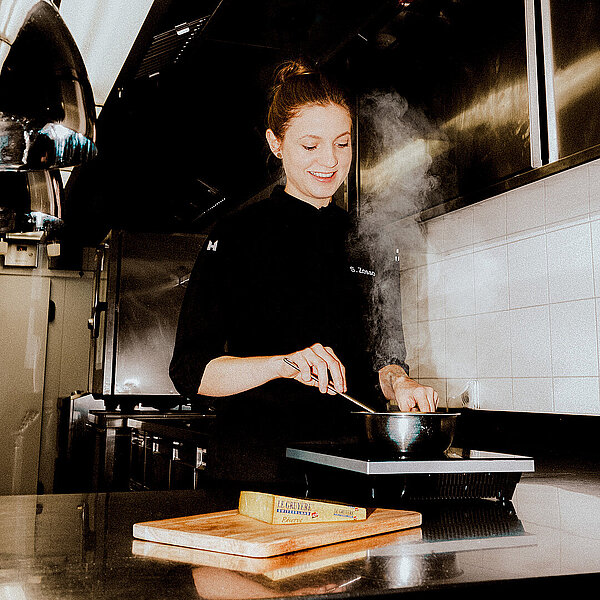Le Gruyère AOP puff pastry with walnut pesto
- 15 min.
- 20 min.
- Appetizers
What an incredible story puff pastry has to tell!
Did you know that it was most likely invented in Antiquity? Whether Greek or Arabic, it had a rather unusual beginning, because although it was not yet called puff pastry, it already had all the characteristics of this incredible and unique pastry. It seems that originally, flour and water were mixed and pre-cooked before being assembled by layering with fat.
The privileged relationship between the Ottoman Empire and Austria enabled the Austrians to master this technique fairly quickly, to the point where our pastry preparations based on puff pastry are even referred to under the evocative name of Viennese pastries.
Another trend in the development of puff pastry seems to have originated in Spain under the culinary influence of the Arabs. This recipe and pastry technique made its masterly entry into French gastronomy in the 19th century, mainly through the many cookbooks written by our great French chefs.
My tip for a successful puff pastry? Try to have the same density between the tempering agent (flour, water and salt) and the fat (generally margarine with a percentage of butter).
Enjoy your meal!

Ingredients for
Note
Attention change of number of people
Puff pastry
-
220 gall purpose flour
-
150 mlwater
-
1 pinchof salt
-
180 gof margarine
Walnut pesto
-
300 gof rapeseed oil
-
50 gof walnut nillon (optional)
-
150 gof fresh basil
-
150 gGruyère AOP
-
50 gof parsley
-
50 mlof Sévery walnut oil
-
50 mlof lemon juice
-
100 gbreadcrumbs
-
4 pinchesof salt
-
20 gof peeled garlic
-
100 gof walnut halves
-
4 pinchesof pepper
Preparation
Puff pastry
- Make the pastry by carefully mixing the flour, salt and water. Work the dough as little as possible. Leave to rest in a cool place for 20 minutes.
- Using a rolling pin, roll out the dough into a Swiss cross leaving more mass in the middle.
- Knead the margarine until it is homogeneous, and then shape it into a slightly flattened cube.
- Place it in the centre of the cross of dough and fold over the edges of the dough.
- Gently roll out into a rectangle with the rolling pin, taking care not to pierce the pastry.
- Fold the resulting rectangle in 3. The first step has been completed.
- Roll out again into a rectangle and fold in 3. The 2nd step is completed. Leave to rest for 20 minutes in a cool place.
- Repeat the operation for the 3rd and 4th times. Leave to rest in the fridge for another 20 minutes.
- Roll out again into a rectangle and fold in 3. The 5th step is completed. Set aside.
Walnut pesto
- Remove the stems from the parsley and basil, peel and degerm the garlic.
- Place in an electric mixer and add all the other ingredients for the pesto. Blend well.
- Check the seasoning and set aside.
- Take the puff pastry out.
- Roll out the pastry again to a minimum of 2.5mm.
- Cover with the pesto. You can use a brush or a spatula. Be careful to do this gently so as not to damage the dough.
- Carefully roll up the dough and place the pesto pinwheels far enough apart so that they don't stick together when cooked.
- Bake at 200°c until golden brown, about 20 minutes.
- Serve on an aperitif dish.





